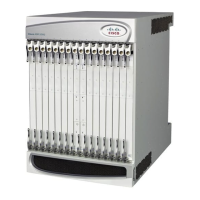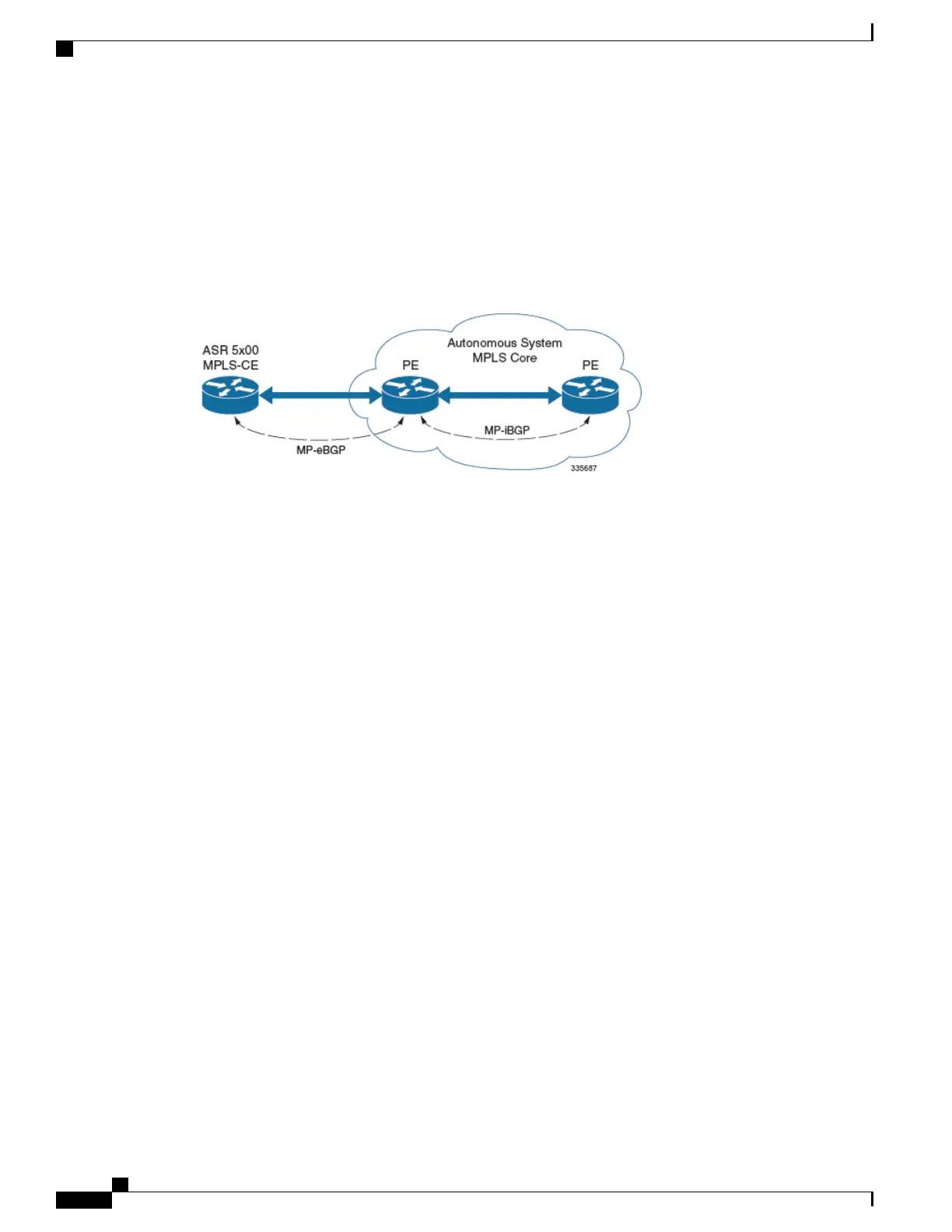MPLS-CE Connected to PE
In this scenario the ASR 5500 functions as an MPLS-CE (Customer Edge) network element connected to a
Provider Edge (PE) Label Edge Router (LER), which in turn connects to the MPLS core (RFC 4364). See the
figure below.
Figure 20: ASR 5500 MPLS-CE to PE
The MPLS-CE functions like a PE router within its own Autonomous System (AS). It maintains Virtual
Routing and Forwarding (VRF) routes and exchanges VPN route information with the PE via an MP-eBGP
(Multi-Protocol-external BGP) session.
The PE is also configured with VRFs and exchanges VPN routes with other PEs in its AS via MP-iBGP
(Multi-Protocol-internal BGP) connections and the MPLS-CE via an MP-eBGP connection.
The EBGP connection allows the PE to change next-hop IP addresses and labels in the routes learned from
IBGP peers before advertising them to the MPLS-CE. The MPLS-CE in this case uses only MP-eBGP to
advertise and learn routes. Label Distribution Protocol (LDP) and Resource Reservation Protocol (RSVP) are
not required because of direct-connect EBGP peering. The MPLS-CE in this scenario pushes/pops a single
label (learned over the MP-eBGP connection) to/from the PE.
ASR 5500 System Administration Guide, StarOS Release 21.4
308
BGP MPLS VPNs
MPLS-CE Connected to PE

